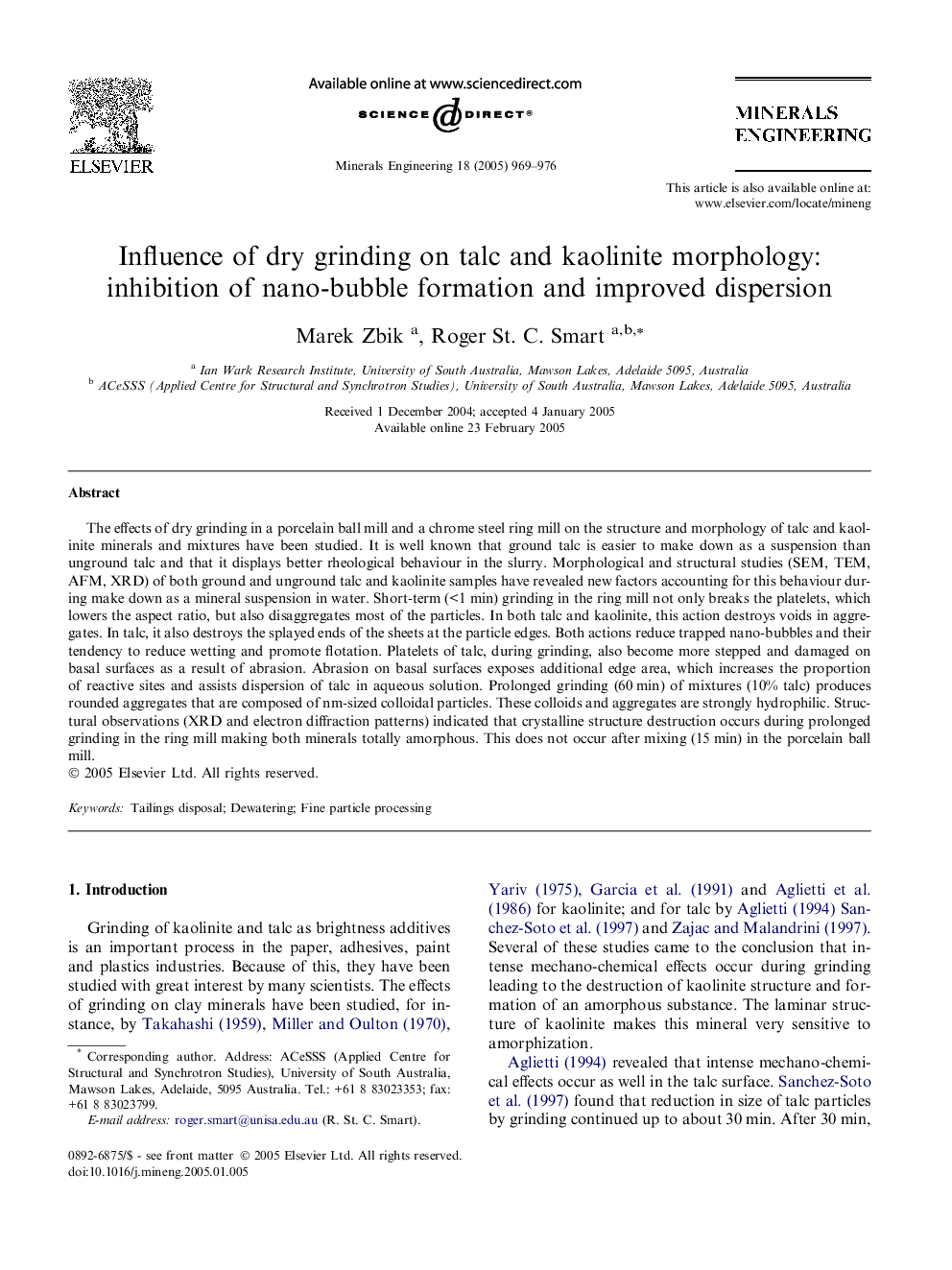| Article ID | Journal | Published Year | Pages | File Type |
|---|---|---|---|---|
| 10279811 | Minerals Engineering | 2005 | 8 Pages |
Abstract
The effects of dry grinding in a porcelain ball mill and a chrome steel ring mill on the structure and morphology of talc and kaolinite minerals and mixtures have been studied. It is well known that ground talc is easier to make down as a suspension than unground talc and that it displays better rheological behaviour in the slurry. Morphological and structural studies (SEM, TEM, AFM, XRD) of both ground and unground talc and kaolinite samples have revealed new factors accounting for this behaviour during make down as a mineral suspension in water. Short-term (<1Â min) grinding in the ring mill not only breaks the platelets, which lowers the aspect ratio, but also disaggregates most of the particles. In both talc and kaolinite, this action destroys voids in aggregates. In talc, it also destroys the splayed ends of the sheets at the particle edges. Both actions reduce trapped nano-bubbles and their tendency to reduce wetting and promote flotation. Platelets of talc, during grinding, also become more stepped and damaged on basal surfaces as a result of abrasion. Abrasion on basal surfaces exposes additional edge area, which increases the proportion of reactive sites and assists dispersion of talc in aqueous solution. Prolonged grinding (60Â min) of mixtures (10% talc) produces rounded aggregates that are composed of nm-sized colloidal particles. These colloids and aggregates are strongly hydrophilic. Structural observations (XRD and electron diffraction patterns) indicated that crystalline structure destruction occurs during prolonged grinding in the ring mill making both minerals totally amorphous. This does not occur after mixing (15Â min) in the porcelain ball mill.
Related Topics
Physical Sciences and Engineering
Chemical Engineering
Chemical Engineering (General)
Authors
Marek Zbik, Roger St. C. Smart,
